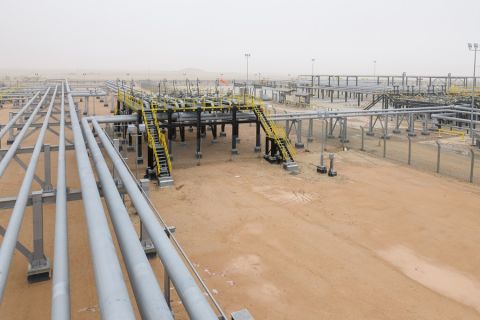This month we take a look at the vision observers have for the U.S. oil and gas industry in 2019. One of the things that struck me as we prepared this issue was the degree of uncertainty or disagreement when discussing the 2019 outlook, yet the degree of general optimism for a brighter picture starting in 2020. By then, we will be exporting much more LNG than we do today, and many new pipelines will be moving oil and NGL to the Gulf Coast for export, finally breaking the infrastructure logjam seen in the in-land basins.
One key factor is, of course, the direction of oil prices, which we discuss in greater detail elsewhere in this issue. OPEC is to meet on Dec. 6, past our deadline, but at a joint OPEC-Russia meeting in Abu Dhabi on Nov. 11, the group agreed that reducing output was probably needed, citing weaker global demand. But at the same time, U.S. output reached 11 million barrels a day-plus.
So many factors converge, from the supply and demand side, to Permian Basin takeaway’s effect on completions, Iran sanctions and other geopolitics, not to mention President Trump’s Twitter-talk down on oil prices in order to help the economy. WTI endured a quick and stunning decline in November.
The analysts at Raymond James wrote at the time, “All in, the next few months could continue to be sloppy for oil prices, but we expect enough bullish catalysts to emerge in early 2019 to reverse the meltdown of the past few weeks. More importantly, the oil market is still on track for Brent prices to move above $100/bbl in 2020.”
There is a lot of caution out there with respect to delivering returns. Companies are trying to return capital to investors even if it means tamping down production growth. These days if E&P executives mention revising their budgets above prior guidance, they must run for cover to escape a barrage of negative investor sentiment.
“I see a virtual spiral of positive effects as you become more thoughtful on what you drill and as you become more consistent, that causes investors to lean in more. It creates a higher-quality set of assets,” said Luis Rodriguez, CEO of Denver-based Raisa Energy LLC.
“To me, where my mind goes when you ask about challenges is that there is the potential for a recession and thus, weakening demand, compounded by easing of the pipeline situation in the Permian, which will then increase U.S. oil production and drive down the oil price—which is why we hedge,” said Rodriguez. He is echoing the cause and effect cycle cited by many of the people we spoke to. His EnCap Investments-backed company buys minerals and royalties.
Rodriguez said the disruption of the MLP buyer universe has left a void in the market where lower-risk, mature assets can’t be connected with investors as easily as before, but he thinks this could begin to change in 2019 if investors who are tolerant of higher risk start to own these mature assets again. “Some flavor of yield-seeking funds will be created,” he told us.
On the bright side, ever-improving horizontal drilling and completions, plus the ability to move water more efficiently, are creating better economics everywhere, said Allen Gilmer, Drillinginfo Inc. CEO. Identifying any one play as standing out above the others is not as true now as it used to be, he told us. Gilmer thinks more of the large unconventional players could go back into conventional plays to take advantage of these technical advances.
Observers said private-equity players will have to hold onto their assets for a longer period and so, their portfolio companies are moving into full-field development or manufacturing mode, with consolidation among them the next wave.
Indeed, everyone we spoke with mentioned corporate mergers being a strong possibility through 2019. The scale and capital required to do efficient cube development to maximize production out of a drilling spacing unit is too great for the small or medium-size operator. Boards cannot support a small-cap tying up millions of dollars to drill a four-well pad and wait nine months to turn it to sales.
“Unconventional plays really have made it matter that you know what you’re doing. The technical staff of a company has never been more of a value builder or a value destroyer,” Gilmer said. “It’s still very company-specific and whether you can box above your weight.”
As we watch OPEC’s moves in the coming days, we take to heart Gilmer’s advice: “Keep doing what you’re doing. If you think about it, the oil and gas industry has given air cover to these U.S. industrialists who decided not to attend the [recent Saudi investor summit in Riyadh]. American fracking has allowed us to say to OPEC and Saudi Arabia, ‘We’re not going to support that.’”
Recommended Reading
Shipping Industry Urges UN to Protect Vessels After Iran Seizure
2024-04-19 - Merchant ships and seafarers are increasingly in peril at sea as attacks escalate in the Middle East.
Paisie: Crude Prices Rising Faster Than Expected
2024-04-19 - Supply cuts by OPEC+, tensions in Ukraine and Gaza drive the increases.
Report: Freeport LNG Hits Sixth Day of Dwindling Gas Consumption
2024-04-17 - With Freeport LNG operating at a fraction of its full capacity, natural gas futures have fallen following a short rally the week before.
Permian NatGas Hits 15-month Low as Negative Prices Linger
2024-04-16 - Prices at the Waha Hub in West Texas closed at negative $2.99/MMBtu on April 15, its lowest since December 2022.
BP Starts Oil Production at New Offshore Platform in Azerbaijan
2024-04-16 - Azeri Central East offshore platform is the seventh oil platform installed in the Azeri-Chirag-Gunashli field in the Caspian Sea.


